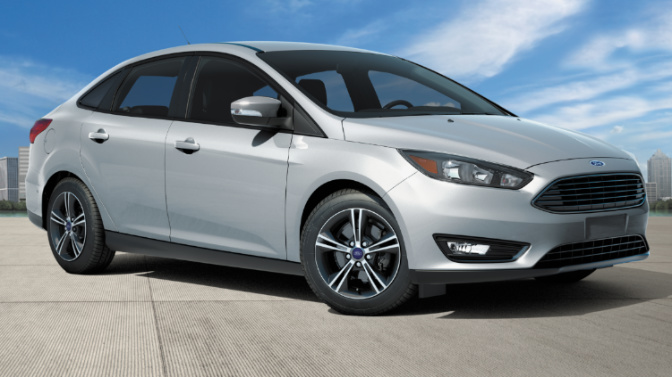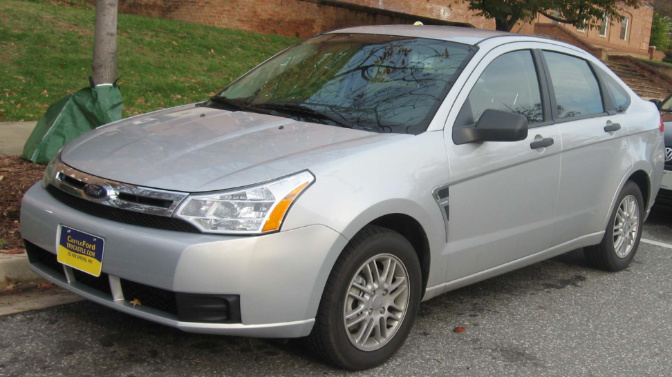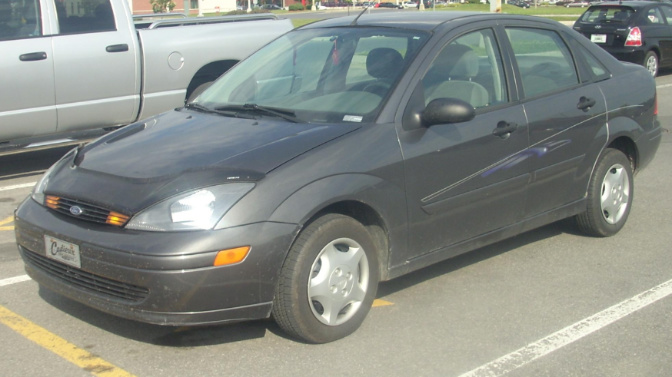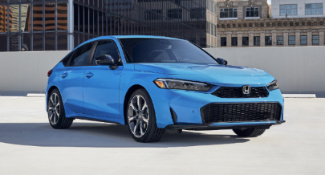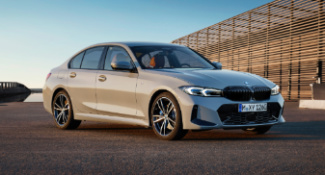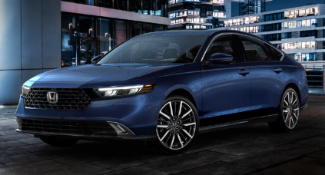2012 - 2018 Ford Focus (3rd Generation)
The 2012 Ford Focus gained an up-to-date platform for its third iteration. Now in four-door sedan or five-door hatchback layouts, the Focus grew larger and more refined, now that it was no longer Ford’s smallest U.S. model (the equally Euro-influenced Fiesta did that). Its styling also stood out more than Ford’s lineup again.
Initial models were powered by a new 2.0-liter four-cylinder with 155 horsepower. A six-speed model was standard on base models, but most received a new six-speed dual-clutch automated transmission.
Just a year later, for 2013, a 1.0-liter turbocharged three-cylinder engine with 123 horsepower was offered as a high-efficiency model, pushing fuel economy figures over 40 mpg highway.
All models received a centrally mounted infotainment screen inside, and most got a USB input and Bluetooth phone pairing. Upgraded models could be equipped with 18-inch wheels, leather upholstery, and a power driver’s seat. The My FordTouch system included a larger touchscreen infotainment system that could be configured in various ways. It could also respond to voice commands to adjust the interior temperature or find directions, as well as manage phone and audio settings.
Ford also offered for the first time an electric version of the Focus. Efficiently dubbed Focus Electric, it used the hatchback’s body with a 23kWh lithium-ion battery for 143 horsepower and a range of 76 miles. Later models received a 33.5kWh battery and slightly longer range. Sales were limited to just 19 cities.
For 2013, Ford reintroduced the Focus ST. Unlike the first-generation model of the same name, the new model was a performance hatchback. It had a 252-horsepower, 2.0-liter turbocharged engine paired only to a six-speed manual. There were brash wheels and exterior modifications, as well, along with a racier interior with bucket seats.
The Focus was mildly updated for 2015, with a more intuitive interior layout and a new grille, but otherwise, changes were minor.
In 2017, Ford rolled out the Focus RS, the most powerful model yet. Taking the hatchback body, it used a 350-horsepower, 2.3-liter turbo-four and all-wheel-drive, along with even more aggressive body add-ons than the less-powerful ST.
Ford ended production of all Focus models in 2018. While the model is still offered in other countries, the automaker said it had no plans for it to return to the U.S.
2008 - 2011 Ford Focus (2nd Generation)
For 2008, Ford heavily revised the Focus again. While not an entirely new car, it had the most revisions to date. The hatchback and wagon models were discontinued, leaving the sedan and a new coupe. Both were visually different on the outside, with newly sculpted sides and grille.
Inside, the interior was revised again, with standard front side airbags and curtain airbags.
There were a new standard driver information display and new seats. Ford’s new Sync voice recognition system was also available, which allowed phone calls to be made and music to be selected by voice commands.
Under the skin, all Focus models had a 140-horsepower, 2.0-liter four-cylinder. A five-speed manual and a four-speed automatic were offered.
The body structure was also stiffened.
The second generation didn’t last long, as Ford prepared a new Focus, again based on the European models.
2000 - 2007 Ford Focus (1st Generation)
The Ford Focus arrived in the U.S. as a 2000 model, replacing the long-running Escort as the company’s smallest car here. Largely a European design, the Focus was a radical departure from other compact cars in terms of its styling, features, and interior packaging.
Initial body styles were a three-door hatchback called the ZX3, a four-door sedan available in three trim levels, and one wagon version. Base models used a 110-horsepower, 2.0-liter four-cylinder, while a 130-horsepower 2.0-liter was an option. Other novel optional features for the compact class were a six-disc CD changer, leather upholstery, side airbags, and electronic stability control.
For 2002, a five-door hatchback, the ZX5, was added.
But for performance enthusiasts, it was the SVT Focus hatchbacks that were the highlight of the nameplate. Competing with models such as the Volkswagen GTI and Honda Civic Si, the 2.0-liter four-cylinder was tuned to 170 horsepower and available only with a six-speed manual transmission. Other enhancements were an exterior body kit, part-leather sport bucket front seats, and revised suspension and braking components.
The Focus was given an exterior revision in 2005, breaking with its European equivalent. Models mostly received revised exterior and interior styling that was more in line with the rest of the US Ford lineup. The SVT models were gone, replaced by the ST sedan with 16-inch wheels, a rear spoiler, and a 151-horsepower engine. All other models got a new 136-horsepower, 2.0-liter four-cylinder.
__History: __
Ford has a checkered history with small cars in the U.S., with the names Pinto and Escort most closely associated. The Focus, launched for 2000, erased many of the memories of those past attempts. It was a fun-to-drive compact, but also practical and well-designed. There were performance models throughout its life, as well as numerous body styles, engines, and even an electric-only model.
Still, most people associate the Focus with being a first car, along the lines of its rivals, the Honda Civic, Toyota Corolla, and occasionally the Volkswagen Golf.
